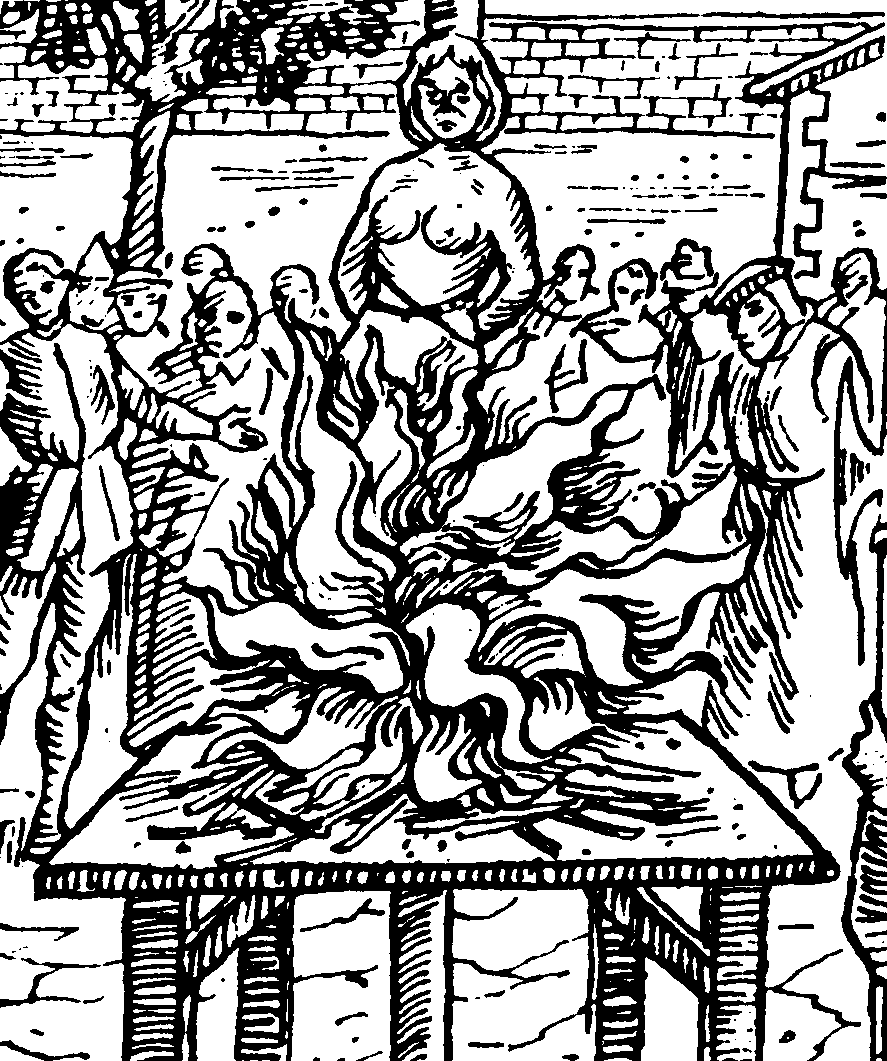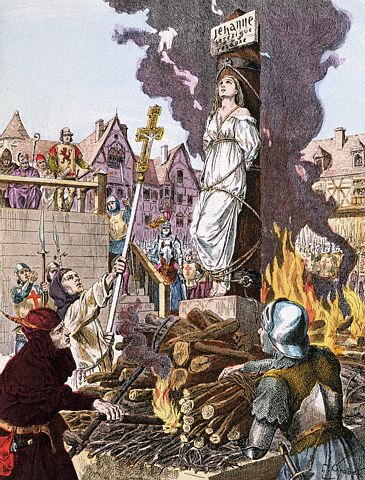April 11: Last Witch Burning in Germany (1775): Churches v. Witchcraft
Last Witch Burning in Germany (1775):
Churches v. Witchcraft
 It was on this date, April 11, 1775, that the last execution for witchcraft took place in Germany. History records that Anna Maria Schwiigel was legally executed at Kempten in Bavaria for the crime of believing in a competing religion. That witchcraft as we know it grew up in the shadow of Christianity, there is no doubt, although there have always been religions that worshipped nature and human sexual expression.
It was on this date, April 11, 1775, that the last execution for witchcraft took place in Germany. History records that Anna Maria Schwiigel was legally executed at Kempten in Bavaria for the crime of believing in a competing religion. That witchcraft as we know it grew up in the shadow of Christianity, there is no doubt, although there have always been religions that worshipped nature and human sexual expression.
The craft was so attractive to its adherents that, not only were perhaps 300,000 tortured and executed for their contrary opinion, but many thousands died rather than renounce their belief in witchcraft — many times more than there had been Christian martyrs when it was their turn to be persecuted! But, like a jealous lover, the One True Church would have no divided loyalties, and so began a thousand years of torture, recantation and auto-da-fé.
The first recorded burning for witchcraft was the Spanish Bishop Priscillian of Ávila in 383. The Joseph McCarthy of witch-hunters was Conrad of Marburg, first Inquisitor of Germany, who claimed he had uncovered many nests of "Devil-worshippers" and memorably vowed, "We would gladly burn a hundred if just one of them was guilty." Joan of Arc, who very possibly was a witch, was burned for it in 1431, followed in 1440 by her close Satanist ally Gilles de Rais.
Pope Innocent VIII, believing literally in Exodus 20:18, issued a bull in 1484 designed to root out witchcraft in Christian Europe, which prompted Jakob Sprenger and Heinrich Kramer to compose their manual for their detection and extermination, called The Witch Hammer (Malleus Maleficarum). It is significant that they believed, "All witchcraft comes from carnal lust, which was in women insatiable." It was no accident that 80% of all accused of witchcraft were women, and that an even higher percentage of those executed were women. This could mean that women were naturally incapable of resisting the entreaties of the devil — or that men felt the need to control female sexuality by punishing it, a not-uncommon belief among Christian conservatives even today.
The worst persecution of witches occurred in Germany and surrounding countries comprising the Holy Roman Empire. Here and there a voice expressed doubts that there really were witches with supernatural powers: Johan Weyer for one; Reginald Scot for another. But the Witch Hammerr proclaimed that a belief that there were such things as witches was so essential a part of Catholic faith, that "obstinately to maintain the opposite opinion savours of heresy."
Protestants were not immune: in 1563 the possibly agnostic Queen Elizabeth issued a statute against witchcraft. Three years later, Agnes Waterhouse became the first Englishwoman to be hanged for it. The Star Chamber in France executed 36. But by the 1700s, coincidentally with the rise and influence of rationalism in Europe, the anti-witch fervor was dying out. Even Joan of Arc was declared a saint in 1920. And just 190 years after the last witch was executed in Germany, the comedy "Bewitched" — about a middle-class witch who tried not to cast spells — began an eight-year run (1964-1972) on American television!
Originally published April 2003 by Ronald Bruce Meyer.


